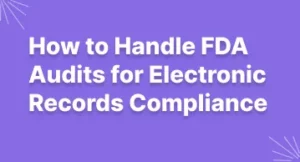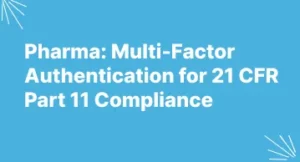How to Launch Your Medical Device: A Step-by-Step Guide
Introduction: What is a Medical Device and the Importance of Bringing It to Market
A medical device is any device or instrument used to diagnose, treat, cure, or prevent any medical condition or illness. This could include equipment for medical imaging, laboratory equipment, surgical equipment, wheelchairs, pumps, etc. Bringing a medical device to market is an important process as it ensures these devices meet safety and efficacy standards. This process requires ample research, regulatory compliance, and product testing in order to reach the market.
In this guide, we will discuss the steps required to bring a medical device to market. This includes researching regulatory standards, submitting applications for approval, complying with safety requirements, establishing a network of suppliers and distributors, creating a marketing strategy, developing a timeline for production and launch, testing the device, and more.
Step 1: Researching Regulations
When it comes to bringing a medical device to market, thorough research of existing regulations is essential. Depending on the type of device, different rules and guidelines must be followed in order to be legally compliant. This includes researching distribution and marketing rules, as well as usage requirements and standards set by the Food and Drug Administration (FDA) or other applicable regulatory bodies.
It is important to be familiar with the specific laws and regulations affecting the sale of the device. This could include classifications of the device, manufacturing standards, labeling requirements, and so on. It is also important to make sure that the intended distribution channels are aware of the applicable regulations, understand them, and have the necessary licenses in place. Additionally, documentation may be required to demonstrate compliance with applicable regulations.
Step 2: Submitting an Application or Proof of Concept
The second step in bringing a medical device to market is to submit an application or proof of concept for approval. This is to ensure that the device meets regulatory standards and is safe for human use. The application can take many forms, depending on the specific nature and purpose of the device.
The FDA (Food & Drug Administration) requires a 510(k) submission when the device has any similarity to an existing device, explaining how it differs from existing products. This is a process of testing, called Premarket Notification, which requires manufacturers to supply sufficient data to FDA to prove the safety and effectiveness of the device.
Alternatively, the FDA will require a Pre-market Approval (PMA) if the device is completely novel, or Class III type. Under this process, manufacturers are required to provide evidence from clinical trials that the device is safe and effective for its intended purpose.
It is important to make sure you understand and comply with all of the regulatory standards applicable to your specific type of medical device. Doing so will help ensure a smooth journey from research and development to successfully bringing your device to market.
Complying with the FDA
When bringing a medical device to market, it is important to be aware of the legal and safety requirements set forth by the Food & Drug Administration (FDA). Depending on the type of device, the manufacturer must file for approval. Generally, this involves submitting an application or proof of concept, which must adhere to the applicable regulatory standards. This is an extremely important step for ensuring the safety and efficacy of the device.
The FDA also has strict rules regarding the distribution, marketing, and usage of medical devices. It is crucial to do the research needed to ensure that these regulations are followed. Failure to comply could be costly in terms of both time and money.
The device must be tested and evaluated by the FDA prior to its marketing and release. This process can take several months or even up to two years. During this time, the manufacturer must work closely with the FDA to ensure that their device meets all applicable standards.
Step 4: Establishing a Reliable Network of Suppliers and Distributors
Before a medical device can be brought to market, it is important to find reliable suppliers and distributors. Finding a good distributor is essential for success, as it can ensure the device is sold through the proper channels and reaches the right audience. It can also provide guidance on how to price the product and distribute it in the right way.
Finding a quality supplier is also necessary in order to create and produce the device. Quality production is essential for safety reasons and many suppliers are familiar with the specialized regulatory requirements for medical device manufacturing. Doing thorough research and speaking to others in the industry can help you decide which supplier to use.
Once suppliers and distributors have been chosen, the next step is to successfully establish a relationship with them. As this can involve sharing sensitive information, such as pricing and financial details, it is important to conduct due diligence and make sure the parties are trustworthy. Additionally, you should familiarize yourself with the laws and regulations regarding the sale of medical devices in your country or state.
By carefully selecting the right suppliers and distributors for your medical device, and ensuring an effective relationship is formed, you can make sure it reaches the right people and has the best change for success when it hits the market.
Step 5: Creating a Marketing Strategy
Once you have obtained approval from the FDA, you can move forward with creating a marketing strategy for your medical device. A good marketing strategy should be tailored to reach the target audience that will benefit from using your device. To find potential buyers, you should research competitors and current trends in the field. You may also consider advertising in medical journals or publications that cater to your target audience.
Another important aspect of creating a marketing strategy is understanding how to price your device competitively. Consider conducting market research on competitors and their pricing strategies to get a better idea of what prices customers are willing to pay. In addition, it’s essential to keep up with industry trends and market changes to ensure that your pricing is in line with industry standards.
Finally, it’s important to develop a plan for how you will deliver your device to customers. This includes decisions around shipping, logistics, and fulfillment. Establishing relationships with reliable suppliers and distributors can help you streamline the process and efficiently deliver your product to customers.
Step 6: Developing a Timeline for Launch, Production, and Fulfillment
Before you can bring your medical device to market, you must decide when it will be available. Developing a timeline for launch, production, and fulfillment is essential as it provides a guide for bringing everything together.
Once you’ve set the date of your product launch, consider the different stages of development it will have to go through. Production is arguably the most important part of this process, and you should budget enough time to ensure that production meets all regulatory requirements. You should also factor in the lead time for any components or parts that need to be sourced and manufactured before final assembly.
When it comes to fulfillment, you need to decide how you will be distributing your medical device. This could involve outsourcing a distribution company or selling it through a third-party platform such as Amazon. Whichever option you choose, you should include any shipping and handling times. You also need to ensure the security of the package and its contents.
Step 7: Testing the Medical Device Prior to Marketing and Release
Before a medical device can be brought to market, the product must undergo rigorous testing to ensure its safety and effectiveness for the intended use. Testing involves validating that the device meets all legal and regulatory requirements, collecting data on the device’s performance and abilities in a laboratory setting, and testing the device against similar products from competitors.
Testing is conducted under strict quality control conditions, such as the FDA’s Good Manufacturing Practices (GMP) guidelines and International Organization for Standardization (ISO) standards. During the process, the device is typically evaluated against internally-produced performance specifications and compared to previously approved devices. This helps to ensure the device performs as expected and complies with applicable safety standards.
When the testing phase is complete, the manufacturer should have a clearly documented record of the device’s performance and its ability to meet the end user’s needs. This is important for obtaining FDA approval and can also be used to answer any questions that customers may have regarding the device’s safety and efficacy.
Conclusion: Bringing a Medical Device to Market
After researching regulations, submitting proof of concept, and complying with safety standards all the way to creating a timeline for launch, it’s essential to ensure you have covered all of the steps necessary to bring your medical device to market. After all of the steps have been taken, it is also important to properly test your medical device, both before and after production.
From researching regulations, to establishing a distribution network, and creating a marketing strategy, a successful launch of a medical device takes careful planning and precision. To make sure you have left no stone unturned, we recommend reviewing our resources and FAQs section for additional information. With all the right pieces in place, you can feel confident in bringing a medical device to market.
Resources and Further Reading
Bringing a medical device to market is a complex process that requires understanding of various regulations, safety procedures, and marketing strategies. To learn more about the process, it’s important to access trustworthy materials from professionals in the industry. Here are some of the best resources for researching and gaining an understanding of the process.
- Medical Device Consultants: Qualified and experienced consultants can provide advice on regulatory compliance, product launch, and marketing. They can be contacted through professional networks or organizations specific to the medical device industry.
- Medical Device Manufacturers Association: The MDEA provides information, resources, and education in areas related to medical device distribution, marketing, and usage. Their website provides useful links to relevant regulatory standards and industry best practices.
- Food & Drug Administration (FDA): The FDA is responsible for regulating the safety and efficacy of medical devices and provides detailed information about their approval process. Its website contains a wealth of resources about medical device regulation and best practices.
- Industry Publications: Various publications provide comprehensive coverage of developments in the medical device industry. Relevant journals include The New England Journal of Medicine, The Lancet, and The BMJ.
FAQs: Questions & Answers on Regulatory Compliance, Product Launch, and Marketing
Below are some of the most common questions when it comes to bringing a medical device to market:
- What regulations apply to the type of medical device I’m marketing?
- What applications do I need to submit as part of the process?
- Do I need FDA approval?
- How do I get reliable suppliers and distributors?
- How do I create a marketing strategy for the product launch?
- What should be taken into consideration when creating a timeline of production?
- What tests and confirmation must be done prior to releasing the device?
The answers to these questions vary depending on the type of medical device you are bringing to market. It is important to research the applicable laws and regulations in your country or jurisdiction that governs the type of device you are marketing, including FDA requirements in the U.S. In addition, be sure to develop a plan for obtaining necessary approvals and certifications, establishing supply chains and distribution networks, creating marketing materials and strategies, and completing all required tests before launch.
Bringing a medical device to market can be an invigorating prospect. But it requires careful planning and compliance with various laws and regulations to ensure safety and success. This guide breaks down the process of bringing a medical device to market into seven steps: research regulations, submit an application, comply with FDA requirements, establish a good network of suppliers and distributors, create a marketing strategy, develop an implementation timeline, and test the device. With these seven steps, you can increase your chances of bringing your medical device to market successfully.
FAQs about Bringing a Medical Device to Market
1. What is a medical device?
A medical device is an item, or piece of equipment intended for use in the diagnosis, cure, mitigation, treatment, or prevention of disease, or intended to affect the structure or any function of the body.
2. What are the regulations regarding distribution and marketing of medical devices?
Regulations regarding medical device distribution and marketing vary between countries. Regulatory bodies such as the U.S. Food and Drug Administration (FDA) have specific rules and guidelines that must be followed for marketing and distributing of medical devices.
3. How does one apply for approval of a medical device?
The approval process for medical devices varies depending on the type of device and the jurisdiction. Generally, it consists of submitting an application and providing proof of concept documents and technical data to the applicable regulatory authority.
4. What are the safety requirements to meet for FDA approval?
The safety requirements for FDA approval include demonstrating product’s safety and effectiveness, ensuring product labeling and instructions accurately reflect actual performance, establishing good manufacturing practices, and regularly documenting product testing results.
5. What are the steps to develop a marketing strategy?
Steps for developing a marketing strategy include understanding customer needs and wants, defining the target market and positioning, and creating budgeting plans and messages that appeal to potential buyers.
6. What sort of timeline should one devise for launch, production, and fulfillment?
Timeline for launch, production, and fulfillment should include pre-launch research for regulations, testing, customer feedback on product, and setting realistic milestones for implementation.
7. What is the process for testing the device prior to marketing and release?
Testing of the device prior to marketing and release should encompass safety, functionality, compatibility, interfacing, error handling, quality assurance/control, reliability, and usability tests.







